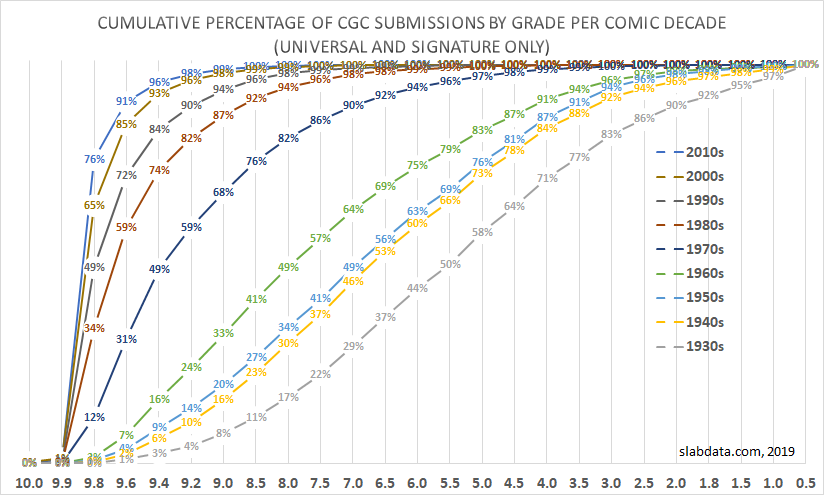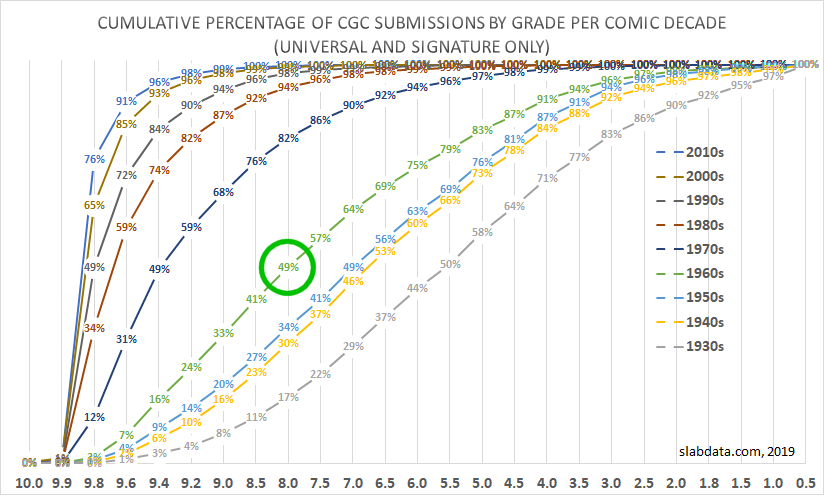Continuing the thoughts of a previous post, let’s take a moment to focus on the 1960s. Comparing the CGC Census grades (cumulative percentages for Universal and Signature Series), we see a distinct difference between the decade and the most valuable comic book in the decade, Amazing Fantasy #15 (1962).
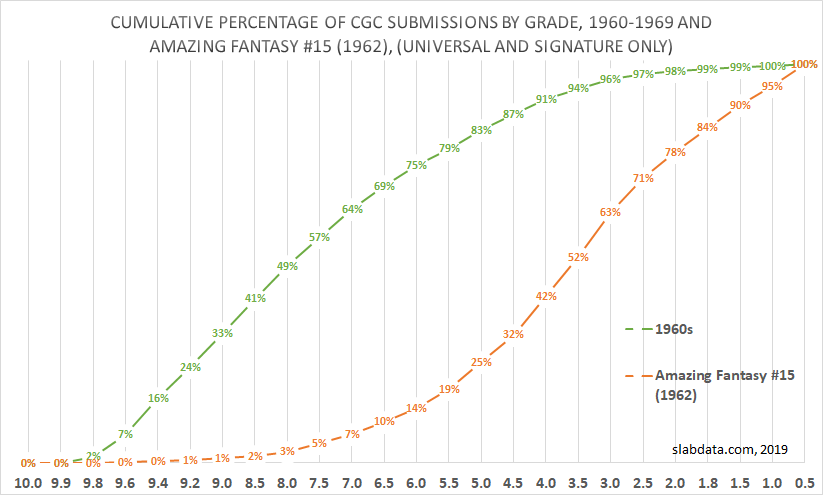
These differences are due to two major factors, first, that books submitted to CGC must (generally) be worth the cost of CGC grading, otherwise, there is no financial reason to submit a book to CGC. As a result, the books submitted to CGC from 1960-1969 have primarily been higher grade copies than average, since value increases as the condition increases. Secondly, the entire decade of the 1960s has been combined to create the 1960s line on the graphic, while Amazing Fantasy #15 represents only a single issue from the single year of 1962.
To remedy these differences, the graphic below represents each year of the 1960s separately, and shows additional comics besides Amazing Fantasy #15 from 1962.
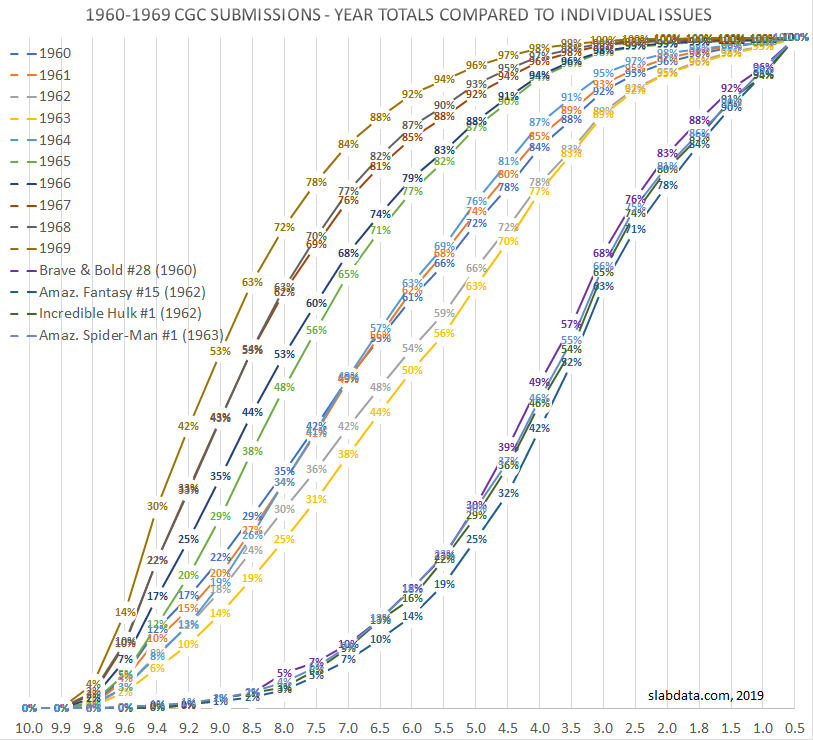
This may be the first time that the consistency of CGC grade percentages has been isolated for major comics of the early 1960s. Because each of these comic books (Brave & The Bold #28, Amazing Fantasy #15, Incredible Hulk #1, and Amazing Spider-Man #1) is generally worth submitting to CGC in all possible grades, these books generally reflect the full populations for each book (percentage-wise), despite every copy not being CGC graded.
While every copy of a comic book is unlikely to be sent to CGC for grading, those comics which are valuable in all grades, including valuable for the difference between CGC 0.5 and CGC 1.0, will be reflected on the CGC Census as a better sample of the total population of comics for that year, or possibly, for several years in that range.
It should be surprising that the four books selected are so closely aligned in their CGC grade percentages, and that they are so far from the percentages of the years they represent. It is possible that these grades may be generally applicable for all comic books of this era, CGC graded or not, even for other comic books of the same age which may have little value.
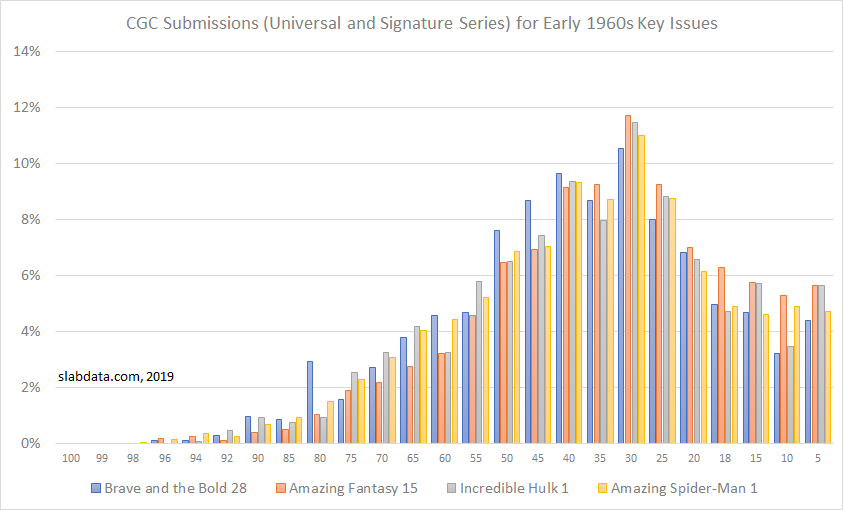
Apart from more CGC 8.0 Brave and the Bold #28 than what might be expected (perhaps due to regrading), is it possible that this general distribution could be applicable to all comics from the early 1960s?
Perhaps time will tell…

